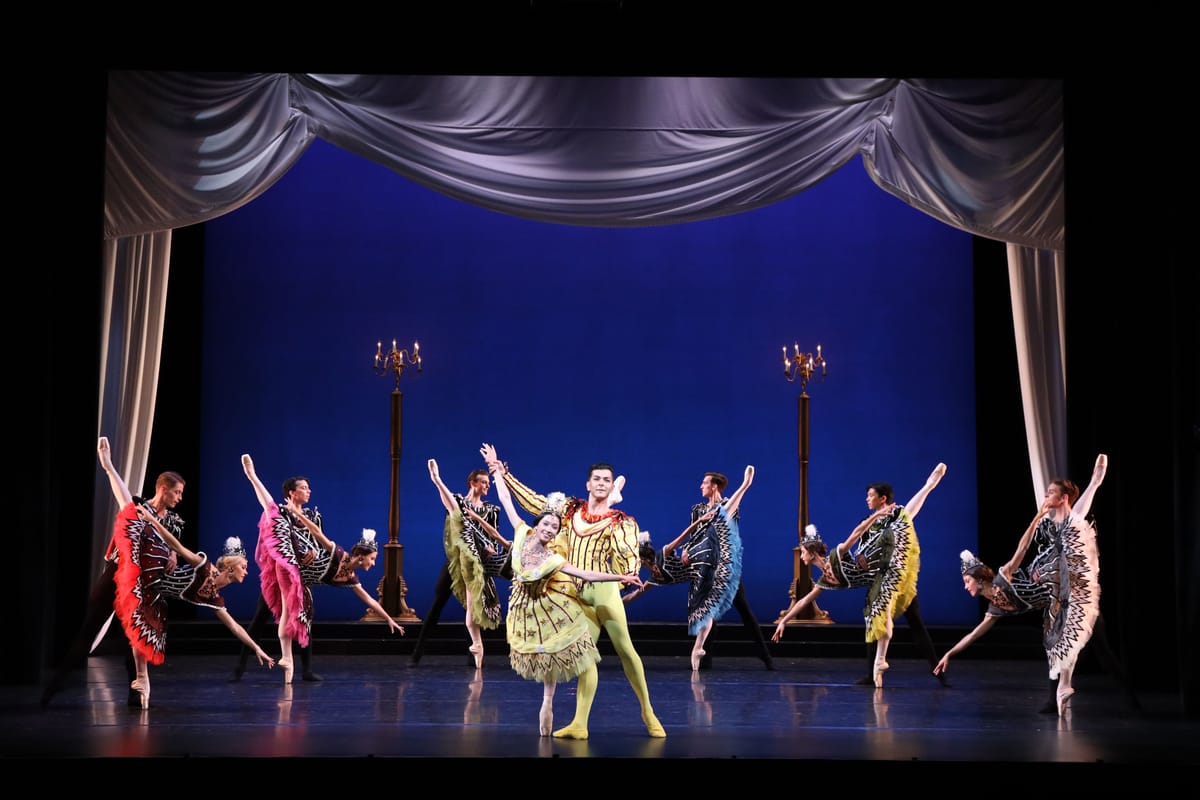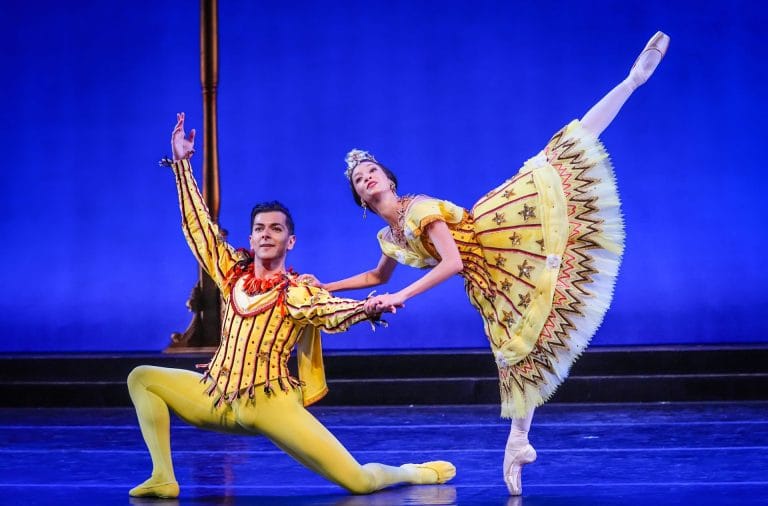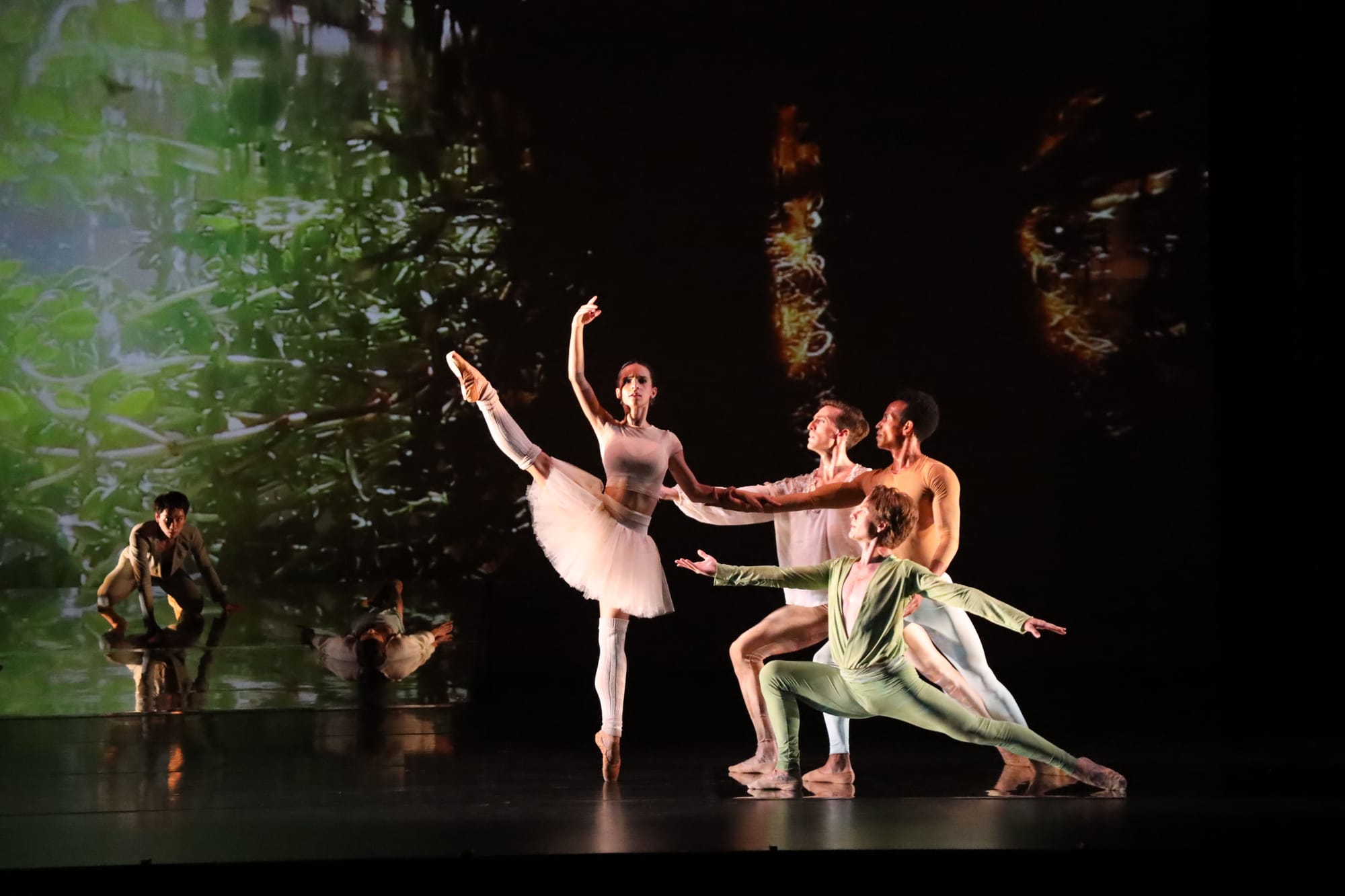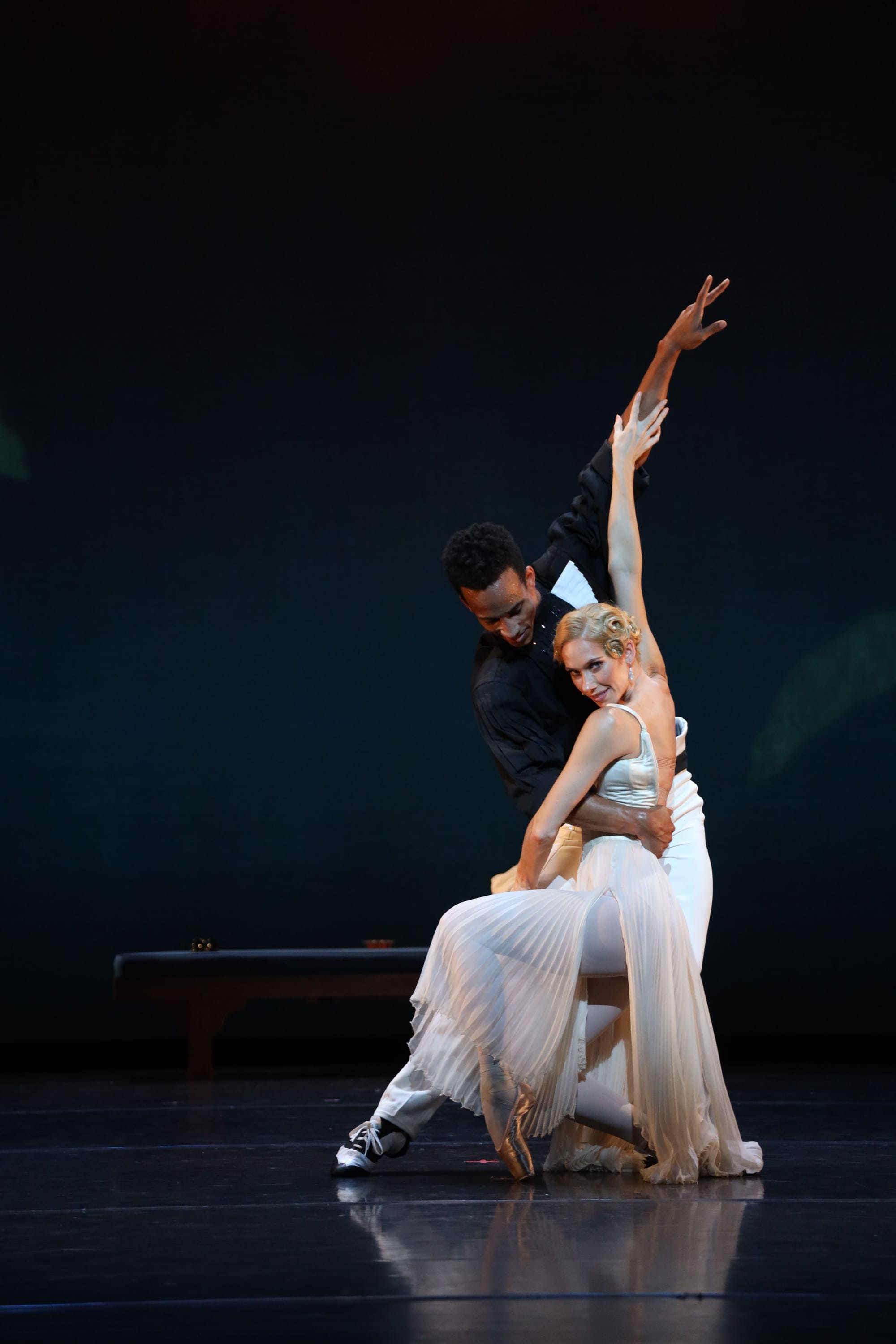Welcome Back

"Birthday Offering", "Shades of Spring", "Varii Capricci"
Sarasota Ballet
Joyce Theater
New York, NY
August 16, 2022
After a two-year interruption the Sarasota Ballet finally made it back to the Joyce Theater for its third August visit. Many of the dancers are new to the company and many old favorites have retired, but the company looked polished and cohesive. The Director, the former Royal Ballet dancer Iain Webb, has built an impressive repertoire, with many works by Sir Frederick Ashton whose deceptively difficult ballets have helped develop the company's detailed, elegant, and unmannered style. The Joyce program had two Ashton works, the 1956 "Birthday Offering" and the 1983 novelty "Varii Capricci", as well as the world premiere of Jessica Lang's "Shades of Spring."
The intimate Joyce Theater has many advantages (it is wonderful to be so close to the stage) but it has no room for an orchestra so all the music was taped; the Joyce's sound system wasn't quite up to the lush orchestral richness of the Glazunov score for "Birthday Offering". This plotless homage to Petipa was made to celebrate the company's twenty-fifth anniversary. (1956 was also the year the Sadler's Wells ballet received a royal charter and became the Royal Ballet.) It is built around Ashton's seven ballerinas, who were graciously acknowledged in the program. Each ballerina got a solo celebrating her special gifts, a nod to the Prologue fairies in Petipa's "The Sleeping Beauty". Anna Pellegrino's fast changes of direction in the Nadia Nerina solo and Dominique Jenkins' solid pirouettes in the Violetta Elvin were especially impressive but each dancer had an assured and confident charm, negotiating the changes of direction, sudden unexpected poses, and shifting upper bodies with ease.

Macarena Giménez, a new principal from Argentina, danced the Fonteyn role. It may have been nerves but she had a too-bright grin that she occasionally flashed at the audience – she is a fine dancer and Ashton doesn't need selling. Her dancing, especially her effortlessly secure balances, had a warm flow and she had a fine rapport with her partner Ricardo Graziano. He danced with a generous dignity and led the six men in a snappy mazurka which was danced with an eager verve, as they bent into those infectious rhythms with a uniform vigor. The men were also able to command the stage as they stood at the rear watching, oh so keenly, the women's solos; they might have been pausing on their way to bow to the Tsar.

There was no bowing in Jessica Lang's "Shades of Spring", a youthful scamper through Haydn piano trios (recorded by the Beaux Arts Trio) for seven dancers dressed in stylized practice clothes and framed by large projections of roots, branches, and flowers; Roxane Devon did the visual art and projection design.
Lang moved her group well and the many entrances and exits were seamless. There were a number of arresting images as the dancers converged around a mirrored ramp in constantly shifting shapes. Ricardo Rhodes stood out with his smooth balances and steady gymnastic moves, and Arcadia Broad and Yuki Nonaka had a fast, boisterous, lighthearted duet, full of jumps and spins. The three women, Marijana Dominis, Emelia Perkins, and Lauren Ostrander, wove in and out, showing a leggy grace.
The overall effect, though, was somewhat muted as the dancers, charmers all, flowed from shape to shape with no apparent purpose or focus. Men occasionally partnered each other, then switched to dancing with whichever woman was on stage with no discernible emotional reaction. According to the program "audiences will be intrigued by the visual experience bringing consideration of how human energy and movement effects the plant life we coexist with". Well, OK, but unfortunately the meaning was as opaque as the grammar, and the work seemed like an aimless romp.

Varii Capricci" is a romp as well, but it is not aimless. It premiered in 1983 at New York's Metropolitan Opera House and later that year was danced at Covent Garden, but then disappeared until Iain Webb revived it in 2019. It began life as a wryly affectionate salute/send up of the Antoinette Sibley/Anthony Dowell partnership; Sibley was La Capricciosa, a jaded lady of leisure lolling on a chaise lounge by a swimming pool surrounded by palm trees (the exceedingly bright sets were by David Hockney) and Dowell was Lo Straniero, a Latin gigolo on the make, complete with dark glasses and a black wig. (I remember a hint of Elvis in his dancing.) Sarasota replaced the elaborate set, which was meant to evoke the Mediterranean island of Ischia, the home of the music's composer, Sir William Walton, with a simple projection of palm trees; only the chaise remained from the original set. This simpler decor helped tone down the somewhat brittle ambiance of the earlier production, and let the focus remain on the dancers.
Ricardo Rhodes as Lo Straniero had no need to wear a black wig, removing the tinge of ironic artificiality the Dowell projected, though he kept his dark glasses, and seemed to enjoy the combination of hustle and elegance in the choreography. The audience definitely did.
Danielle Brown was a striking La Capricciosa, exuding Sibley's air of fierce independence combined with luxurious sensuality. She saw what she wanted and went after it, removing Rhodes' dark glasses with an erotic shiver, living for the moment; a vivid portrait of a rather selfish, shallow woman. As he often did, Ashton sympathized with his flawed characters (the stepsisters in "Cinderella", Alain in "La Fille Mal Garden", Bottom in the "Dream" are notable examples) and Brown made a lyrical poem of the brief moment when she, alone on the stage, turned her back to the audience and walked slowly to her chaise lounge as the tilt of her head, the angle of her shoulders, and the movement of her back expressed loss, longing, determination and resignation.
Ashton combined this poetry with some tongue in cheek references to the classical canon, as Brown danced with four subsidiary suitors who were apparently slumming from the Rose Adagio, before echoing poor Siegfried looking for his missing beloved in the four corners of the stage only to be told "Nope, not here". This slightly uneasy combination of emotion and satire may be one of the reasons the ballet didn't last, but Sarasota danced it honorably and it is a fine addition to their Ashton collection.
Copyright © 2022 by Mary Cargill



